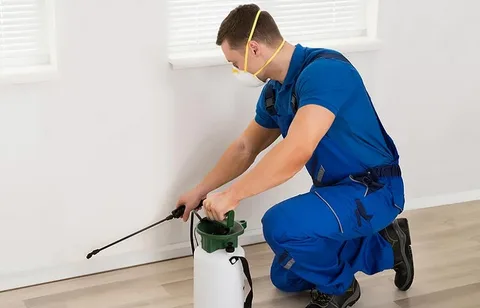Termites, those elusive insects with an insatiable appetite for wood, pose a significant threat to homeowners worldwide. Their ability to silently infiltrate and devour wooden structures makes them a formidable foe, capable of causing extensive damage and financial strain. Whether you reside in a bustling urban neighborhood or a quiet rural enclave, the risk of termite infestation looms ominously. Understanding the nature of these pests and implementing proactive measures is essential for safeguarding your home and peace of mind. In this guide, we’ll explore the intricacies of termite control services, empowering you with the knowledge and strategies needed to protect your home from these relentless invaders.
Understanding Termites
Termites, often referred to as “silent destroyers,” are social insects that live in colonies, tirelessly working to feed and expand their nests. These resilient creatures thrive in moist environments and feast on cellulose-rich materials, with wood being their primary source of sustenance. The termite caste system consists of workers, soldiers, and reproductive individuals, each playing a vital role in the colony’s survival and proliferation.
One of the most insidious aspects of termite behavior is their ability to remain hidden from plain sight. Subterranean termites, the most common type found in homes, build intricate mud tubes to traverse through soil and access wooden structures. These mud tubes serve as highways for termites, allowing them to travel undetected while wreaking havoc on your property.
Signs of Termite Infestation
Detecting termite infestations early is paramount for minimizing damage and mitigating costly repairs. Familiarizing yourself with the following signs can help you identify a potential termite problem:
- Mud Tubes: Keep an eye out for pencil-sized mud tubes running along the exterior walls, foundation, or wooden structures. These tubes serve as highways for subterranean termites and are a telltale sign of an active infestation.
- Hollow-Sounding Wood: Tap wooden surfaces, such as beams, floors, or furniture, to check for hollow-sounding areas. Termites consume wood from the inside out, leaving behind a hollow shell that can collapse under pressure.
- Discarded Wings: During swarming season, reproductive termites (known as swarmers) shed their wings after mating. Piles of discarded wings near windowsills, doors, or light sources may indicate the presence of a nearby termite colony.
- Frass: Termite droppings, known as frass, resemble tiny wood pellets and are often found near termite galleries or feeding sites. Accumulations of frass may indicate an active infestation, especially in areas with high termite activity.
Professional Termite Inspections
While DIY inspections can provide valuable insights, nothing beats the expertise of a professional termite inspector. Termite control employs trained technicians who specialize in detecting and treating termite infestations. During a professional inspection, technicians use a combination of visual assessments, probing tools, and advanced detection equipment to identify termite activity and assess the extent of damage.
Termite control professionals are trained to recognize subtle signs of infestation that may go unnoticed by untrained eyes. By conducting regular inspections, homeowners can catch termite problems early, potentially saving thousands of dollars in repair costs down the line.
Termite Control Strategies
Once a termite infestation is confirmed, termite control professionals employ a variety of strategies to eliminate the pests and prevent future infestations. Some common termite control methods include:
- Chemical Treatments: Liquid termiticides are commonly used to create a chemical barrier around the perimeter of the home, effectively repelling or killing termites upon contact. Additionally, baiting systems utilize poisoned baits strategically placed around the property to attract and eliminate termite colonies at their source.
- Physical Barriers: Installing physical barriers, such as metal screens or sand barriers, can prevent termites from accessing vulnerable areas of your home. These barriers create a physical obstacle that termites cannot penetrate, offering long-term protection against infestation.
- Wood Treatments: Treating wooden structures with borate-based solutions or pressure-treated wood can deter termites from feeding on them. These treatments penetrate the wood, making it toxic to termites while remaining safe for humans and pets.
- Soil Treatments: Soil treatments involve applying liquid termiticides directly to the soil around the perimeter of the home, creating a chemical barrier that repels or kills termites upon contact. This method is particularly effective against subterranean termites, which often enter homes through soil-to-wood contact points.
- Heat Treatments: Heat treatments involve raising the temperature of infested areas to lethal levels, effectively killing termites and their eggs. This method is especially useful for localized infestations or areas where traditional chemical treatments may not be feasible.
Regular Maintenance and Prevention
In addition to professional termite control treatments, homeowners can take proactive measures to minimize the risk of termite infestations. Implementing the following maintenance practices can help create a less hospitable environment for termites:
- Address Moisture Issues: Termites thrive in moist environments, so it’s essential to address any moisture problems around your home. Fix leaky pipes, repair roof leaks, and ensure proper drainage to prevent water accumulation near the foundation.
- Remove Wood-to-Soil Contact: Termites can easily access your home through direct contact between wood and soil. Where possible, create a barrier between wooden structures and the soil by using concrete or metal barriers.
- Keep Firewood Away: Store firewood, lumber, and other wooden materials away from the foundation and elevated off the ground. This reduces the likelihood of termite colonies establishing themselves near your home.
- Seal Cracks and Crevices: Seal cracks, gaps, and entry points around doors, windows, and utility penetrations to prevent termites from gaining access to your home.
Choosing the Right Termite Control Service
When selecting a termite control service, it’s essential to consider several factors to ensure you’re receiving effective and reliable treatment:
- Experience and Reputation: Look for companies with extensive experience in termite control and a proven track record of success. Reading customer reviews and asking for referrals can help gauge a company’s reputation.
- Licensing and Certification: Verify that the termite control service and its technicians are properly licensed and certified to perform pest control services in your area. Licensing requirements vary by state, so be sure to check local regulations.
- Comprehensive Services: Choose a termite control provider that offers a range of services, including inspections, treatment, and prevention. A comprehensive approach ensures that all aspects of termite control are addressed to protect your home effectively.
- Guarantees and Warranties: Inquire about any guarantees or warranties offered by the termite control service. Reputable companies often stand behind their work and may offer warranties on treatments to provide peace of mind for homeowners.
Final Words
Termite control is an essential aspect of homeownership, safeguarding your investment and ensuring the longevity of your property. By understanding the signs of termite infestation, investing in professional inspections, and implementing effective control strategies, you can protect your home from the devastating effects of these destructive pests. Remember, early detection and proactive prevention are key to maintaining a bug-free home. With the help of reputable termite control services and diligent maintenance practices, you can enjoy peace of mind knowing that your home is fortified against termite intruders.






